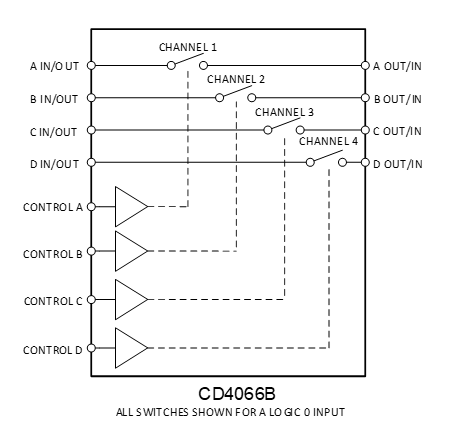SCHS051J November 1998 – August 2024 CD4066B
PRODUCTION DATA
- 1
- 1 Features
- 2 Applications
- 3 Description
- 4 Pin Configuration and Functions
- 5 Specifications
- 6 Parameter Measurement Information
- 7 Detailed Description
- 8 Application and Implementation
- 9 Device and Documentation Support
- 10Revision History
- 11Mechanical, Packaging, and Orderable Information
Package Options
Refer to the PDF data sheet for device specific package drawings
Mechanical Data (Package|Pins)
- J|14
Thermal pad, mechanical data (Package|Pins)
Orderable Information
7.2 Functional Block Diagram

A. All control inputs are protected by the CMOS protection network.
B. All p substrates are connected to VDD.
C. Normal operation control-line biasing: switch on (logic 1), VC = VDD; switch off (logic 0), VC = VSS.
D. Signal-level range: VSS ≤ Vis ≤ VDD.
Figure 7-1 Schematic Diagram of One-of-Four Identical Switches and Associated Control Circuitry